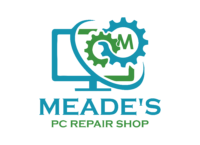Running a business today is a bit like steering a ship through unpredictable weather — new tools, cyber threats, and regulations roll in fast.
Your IT infrastructure is what keeps the ship afloat. Without strong systems and forward planning, even a small wave — a software bug, power failure, or lost data — can capsize operations.
TL;DR
- Think resilience, not reaction — redundancy beats repair.
- Automate monitoring and patching before crises happen.
- Build partnerships with reliable IT service providers.
- Strengthen flexibility with hybrid cloud and modern networking.
The Fragile Core of Modern IT
Most outages aren’t caused by hackers — they’re caused by neglected basics. A single unpatched server or aging router can trigger hours of downtime.
| Vulnerability | Risk Level | Mitigation Approach |
| Unpatched software | Critical | Adopt automated updates through Microsoft Intune |
| No backup policy | Severe | Implement hybrid systems using Veeam Backup or similar solutions |
| Lack of visibility | High | Centralize alerts using Splunk Observability Cloud |
Even small businesses can integrate these systems incrementally — start with patching automation, then build toward redundancy.
The Hidden Power of Reliable IT Partnerships
Outsourcing IT management isn’t surrender — it’s strategy.
Partnering with Meade’s PC Repair Shop provides an extra layer of protection through managed IT services, 24/7 monitoring, and proactive maintenance.
Their structured approach minimizes risk, ensures uptime, and lets owners focus on growth instead of system failures.
Checklist – Is Your Infrastructure Ready?
Use this quick self-audit to gauge your system’s readiness:
Backups verified weekly (test recovery quarterly)
MFA and conditional access policies enforced company-wide
Cloud workloads mapped for redundancy
Endpoint protection with behavioral analytics
Documented disaster recovery (DR) plan reviewed annually
Vendor security reviews scheduled and logged
Dedicated budget line for IT emergencies
(If you rely on remote teams, a visibility layer like Atlassian Statuspage helps communicate outages transparently.)
Building Resilience Layer by Layer
Resilient infrastructure means multiple fail-safes — not one big expensive tool.
Here’s how to start layering defense and reliability:
- Assess – Run a full systems audit using tools like Google Cloud Security Scanner.
- Prioritize – Rank assets by business impact (payment systems, ERP, etc.).
- Protect – Implement tiered access control and next-gen firewalls such as Fortinet FortiGate.
- Monitor – Centralize event tracking and alerts with observability suites.
- Test – Simulate outages quarterly to evaluate failover effectiveness.
- Evolve – Review IT strategy annually; retire outdated tools fast.
How Vision and Automation Are Changing IT
The impact of machine vision on IT resilience is profound.
By integrating real-time analytics and automation, machine vision helps industries detect problems faster — whether that’s a misaligned conveyor belt or a data-center overheating event.
Such systems depend on rugged, high-performance computing environments capable of processing data continuously under demanding conditions.
(Pairing machine vision with edge computing hardware enhances responsiveness and operational safety.)
Spotlight – Product Highlight
Dell PowerEdge T550 Server — A balanced mid-range enterprise tower server built for hybrid infrastructure and virtualization, ideal for businesses seeking scalability without overspending.
FAQ — Quick Answers for Busy Managers
Q1: How often should we update systems?
At least quarterly, or immediately for critical patches. Automate wherever possible.
Q2: Our IT budget is tight. Where do we start?
Begin with security hygiene — MFA, endpoint protection, and cloud backups. These offer the greatest ROI per dollar.
Q3: How can we maintain visibility when everything’s in the cloud?
Use unified dashboards — AWS CloudWatch offers consolidated insights into uptime, latency, and anomalies.
Glossary
- MFA (Multi-Factor Authentication): An added verification layer beyond passwords.
- Hybrid Cloud: Using both on-premise and public cloud systems for flexibility.
- Disaster Recovery (DR): Processes and tools to restore operations after failure.
- Endpoint Protection: Software that safeguards user devices from malware and intrusion.
- Managed IT Services: Outsourced monitoring, maintenance, and support designed for reliability.
In an unpredictable world, IT strength is built, not bought.
Invest in layered resilience — trusted vendors, secure backups, and proactive monitoring.
Your systems don’t need to be invincible — just stable enough to weather any storm.
When the next disruption hits, your business should already be ready to adapt, recover, and move forward.



Recent Comments